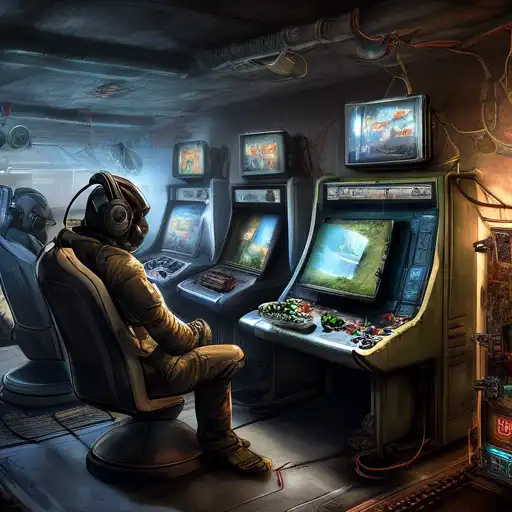The Dawn of Gaming Technology
The story of gaming technology begins in the early 20th century, with simple mechanical games. However, the real revolution started in the 1970s with the advent of video games. Pong, released in 1972, marked the beginning of a new era, showcasing the potential of electronic entertainment.
The Arcade Era
During the late 1970s and early 1980s, arcade games dominated the gaming scene. Titles like Space Invaders and Pac-Man became cultural icons, introducing the world to the addictive nature of video games. This era laid the foundation for the gaming industry, proving that video games could be a profitable entertainment medium.
The Home Console Revolution
The introduction of home consoles like the Atari 2600 and later the Nintendo Entertainment System (NES) brought gaming into the living room. This shift not only made gaming more accessible but also introduced a new level of storytelling and gameplay complexity.
The Rise of Personal Computers
Parallel to the console market, personal computers began to emerge as a viable platform for gaming. Games like Doom and Myst showcased the power of PCs, offering experiences that consoles couldn't match at the time. This period also saw the birth of online gaming, a precursor to today's massive multiplayer online games.
The 3D Revolution
The mid-1990s witnessed a significant leap in gaming technology with the transition from 2D to 3D graphics. Consoles like the Sony PlayStation and Nintendo 64 introduced gamers to fully realized 3D worlds, changing the way games were designed and played.
The Internet Age
With the widespread adoption of the internet, gaming underwent another transformation. Online multiplayer games became increasingly popular, leading to the rise of esports and streaming platforms. This era also saw the introduction of digital distribution, making games more accessible than ever before.
The Modern Era
Today, gaming technology continues to evolve at a rapid pace. Virtual reality (VR) and augmented reality (AR) are pushing the boundaries of immersion, while cloud gaming promises to make high-quality gaming experiences available to anyone with an internet connection. The future of gaming technology is bright, with endless possibilities on the horizon.
From humble beginnings to a multi-billion dollar industry, the evolution of gaming technology is a testament to human creativity and innovation. As we look forward to the next chapter, one thing is certain: the journey is far from over.
